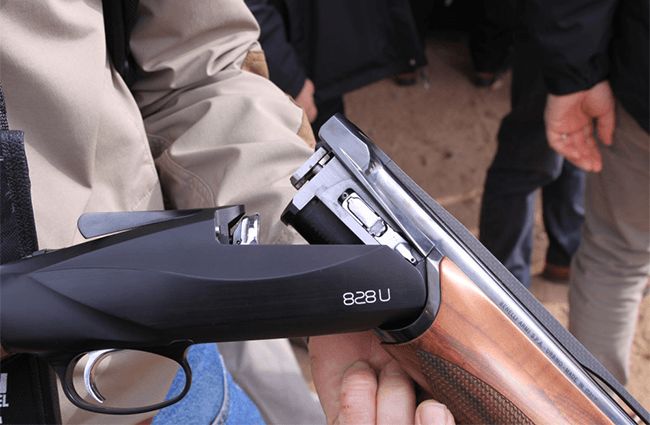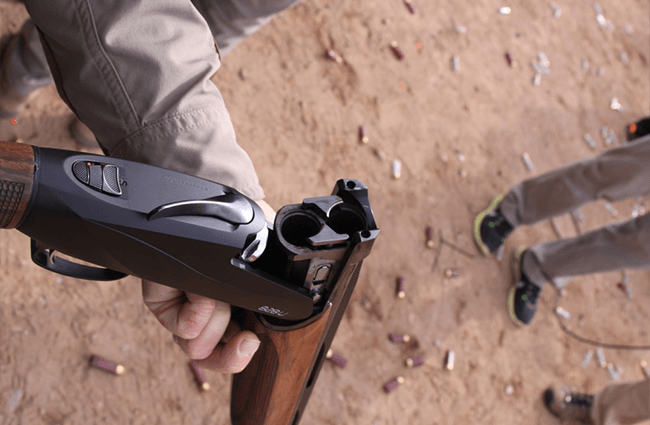Getting Started in Sporting Clays
Sporting clays is arguably one of modern shotgun history’s most popular sports. It is one that can be extremely challenging, yet it’s also a discipline a complete beginner can participate in and enjoy.
It’s often said that sporting clays is akin to “golfing with a shotgun.” Similar to golf, sporting clays rounds are shot on courses, no two of which are the same. Also similar to golf’s individual holes to play, a sporting clays course has “stations,” where again no two will be the same. Indeed, a sporting clays course setup is only limited by the imagination of course designer and the surrounding terrain. This variety is the biggest draw to the sport and one of the reasons many who are easily bored with the highly repetitious sports of trap and skeet seek it out.
Sporting clays do not have standard distances or angles like trap or skeet. In fact, the game’s original intention was to mimic hunting situations, where you’d find targets thrown to simulate fast-moving ducks, high-flying geese, flushing pheasants, hopping rabbits and more. To simulate different game and add another element of challenge beyond the many different distances at which sporting clays targets are thrown, this sport utilizes six uniquely different clay targets. The majority of targets will be the standard size used for trap and skeet, but you will also encounter a large and harder to destroy rabbit target, a flat-edged “battle” and two targets that are the same shape as a standard skeet clay target, but smaller: the “midi” and the “mini.” The mini can be a very challenging target, and many clay shooters joking call it “flying aspirin.”
Sporting clays course design is largely dictated by the range facility’s available terrain. They are set up as roving courses consisting of 10 to 15 shooting stations or stands. Competitors walk to each station, though many large courses allow the use of golf carts.
Guns for Sporting Clays
You are free to use any shotgun that’s safe and capable of shooting two shots, so semi-autos, pumps, over/unders and side-by-sides are all acceptable. The 12-gauge shotgun is the most commonly used, though many competitions have “sub-gauge” categories available for those who wish to shoot 20- and 28-gauge and .410-bore. The 12 gauge offers a larger payload of shot and the most available range for longer shots, thus it is the primary choice of serious competitors.
Aside from the choice of gauge, most experienced sporting clays shooters prefer to use an over/under so that each barrel can be outfitted with a different choke. This allows the shooter to use the most advantageous shot pattern for each bird they’ll be shooting at. Despite the popularity of over/unders, new shooters are well advised to consider a semi-auto. Not only are they generally less expensive than an over/under, but the recoil will also be less, making your experience much more enjoyable. Learn more about the different types of shotguns, then find a firearms retailer near you and pick out a shotgun that’s right for you.

Sporting clays can be shot with any shotgun that holds two or more rounds. The over/under is the most popular choice here in the U.S.
Ammunition
Not all shotgun ammunition is the same. Shot in the No. 7½ to No. 9 range is most commonly used. In fact, most clay target ranges prohibit shot sizes larger than No. 7½, to ensure that airborne shot doesn’t travel further than the range limits. Always check with the gun club or management prior to heading out to the range for shot-shell recommendations and restrictions. Learn more about shotgun shells here.
Safety
Safety is the primary concern in any shooting sport and failing to follow a few basic rules is the quickest way to draw unwanted attention — or worse. When on the course and traveling to and from the course from your vehicle or shooting range clubhouse, always visually demonstrate your shotgun is unloaded by carrying it with the action open. You, of course, should also be conscious of where your muzzle is pointed — in the air or at the ground are generally considered acceptable.
Once on the course, the No. 1 rule in sporting clays (or skeet or trap) is that you are never to load your shotgun until you are on station and it is your turn to shoot. If during your time to shoot you have a malfunction or failure to fire, you will stay in the shooting box or station enclosure and keep the muzzle pointed down range. You will then verbally declare the malfunction to the other shooters and range personnel before either unloading or asking for help to clear the malfunction. Never move off station until the failure is fixed and the gun empty and shown with its action opened, or competent assistance takes control of the firearm.

Unless you are in the shooting box and it’s your turn to shoot, your gun should always be unloaded and the action open for others to see.
Shooting a Round of Clays
To start, you will proceed to the first station and progress through the various stations in order. Always stay on the prescribed walking paths from station to station.
A round of sporting clays can be 50 or 100 shots, and some big competitions will shoot up to 300 targets or more over two or three days of tournament play. With 10 to 15 stations, then, you’ll shoot four to eight targets at each one before moving on to the next station. Targets can be thrown as:
-
Singles
One clay bird is thrown each time the competitor calls for the target.
-
Following pairs
On the shooter’s call, one bird is launched. After a predetermined amount of time, usually a few seconds, the person operating the traps on that station will throw a second target.
-
Report pairs
On the shooter’s call, one bird is launched. When the competitor fires (and whether they hit or miss the target), the second target is launched. Thus, it is launched “on the report” from the first shot.
-
True pair
Two clays are thrown at the exact same time. This is also called a “dedicated” or “sim” pair.
Sporting clays shooters generally shoot in groups of two to six shooters known as “squads.” Prior to the first shooter up at each new station, the puller or referee will throw a “show pair” of targets to the entire squad. This allows the shooters to strategize the best approach (including where they want to start their swing, where they want to break one target so they can best address the second target, choke choice and ammunition selection) to successfully hit both targets. Members of the squad will often discuss the strategy among themselves, making this a very friendly sport to shoot. This is especially true for new shooters who will often have as much help as they need to get through their first times on course. Check out this great resource for new shooters!
When it’s your turn to shoot, step up to the station. Once in the shooting position and the gun is pointed downrange, you’ll load two shells. When you are ready, you’ll call “Pull!” and the station operator will launch the target or targets. You will repeat this for each pair the station calls for you to shoot. When you are done shooting that station, open the breech, ensure you have removed all spent hulls, point your muzzle in a safe direction (sky or ground) and exit the station. The referee will determine if you hit any part of the bird as you shoot and score your shots as hits or misses.
Sporting clays shooters and range personnel tend to be some of the most friendly and generous in the shotgunning sports. You’ll find them eager to share their knowledge, tips and tricks with shooters of all skill levels. Undoubtedly, I’ve seen most show more enthusiasm when a new shooter hits a target than when they do, so ask questions, get involved and in no time at all, you’ll be enjoying this game of “golf with a shotgun.”